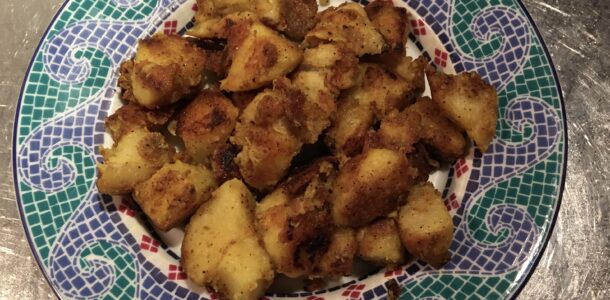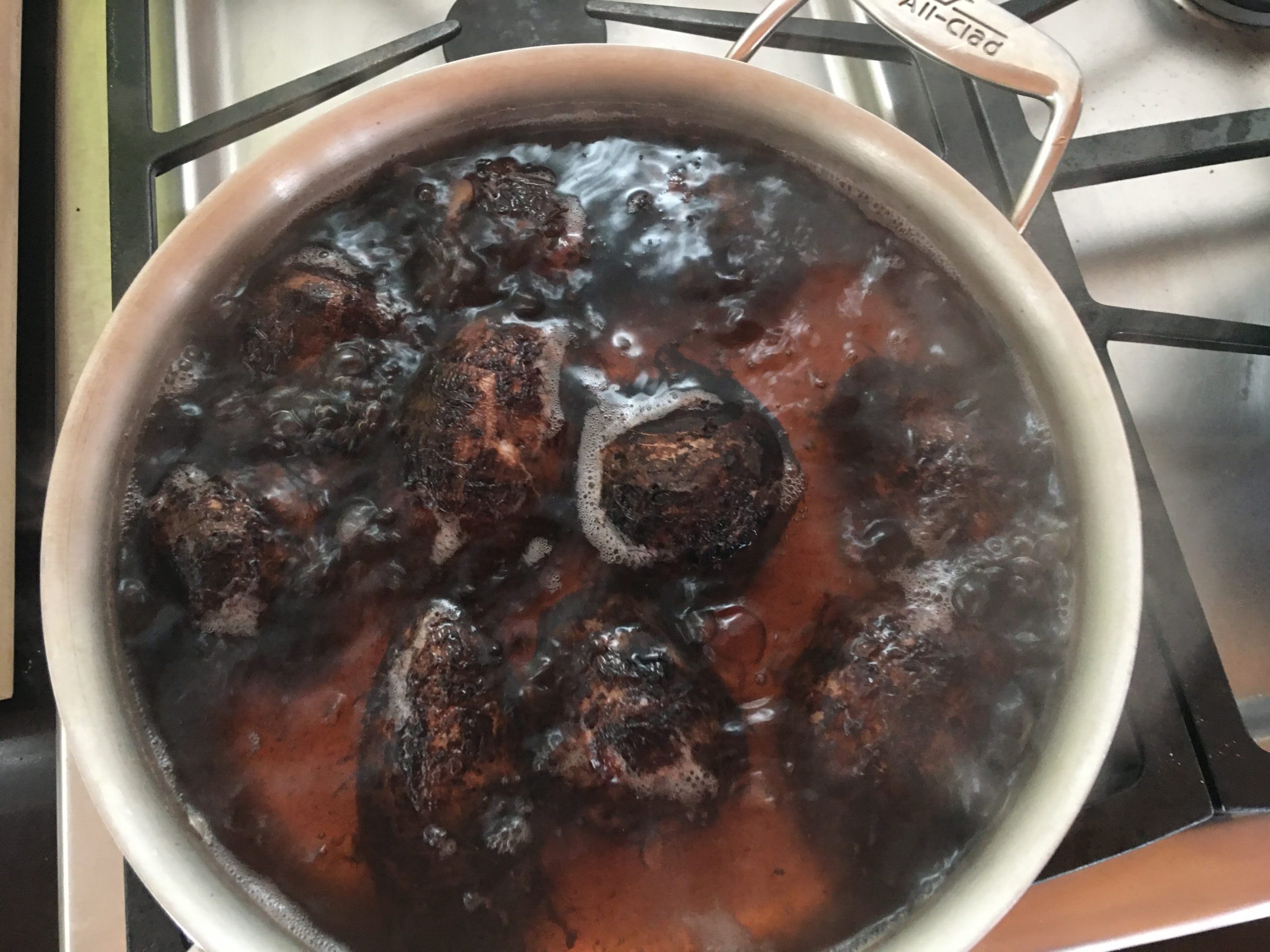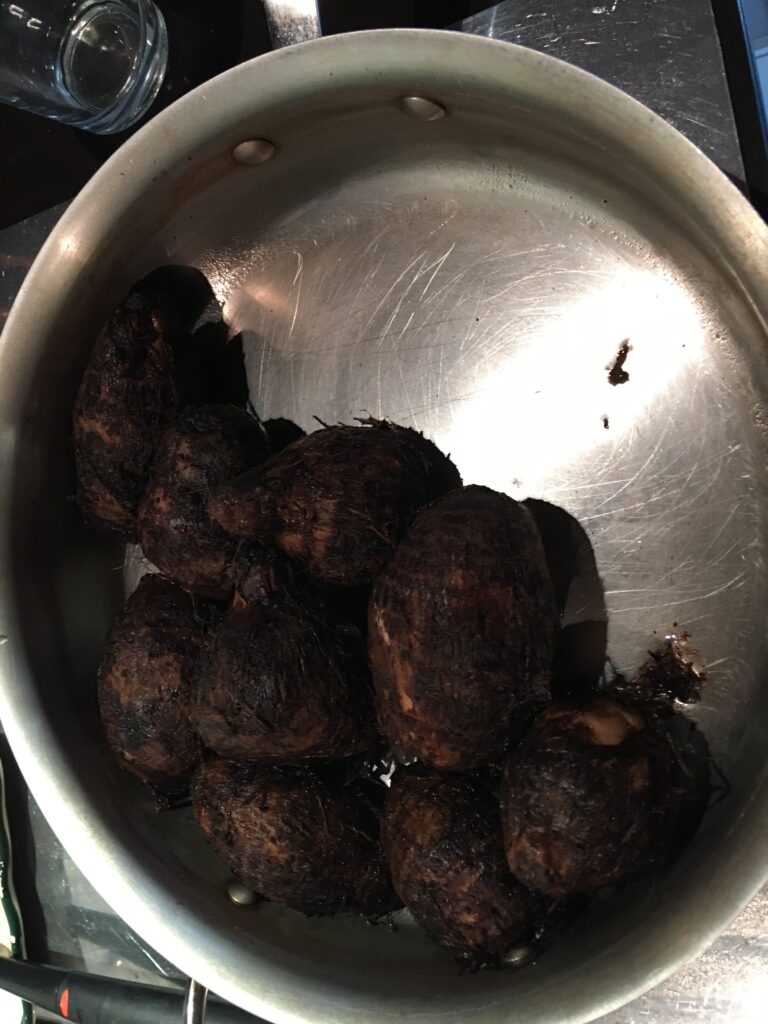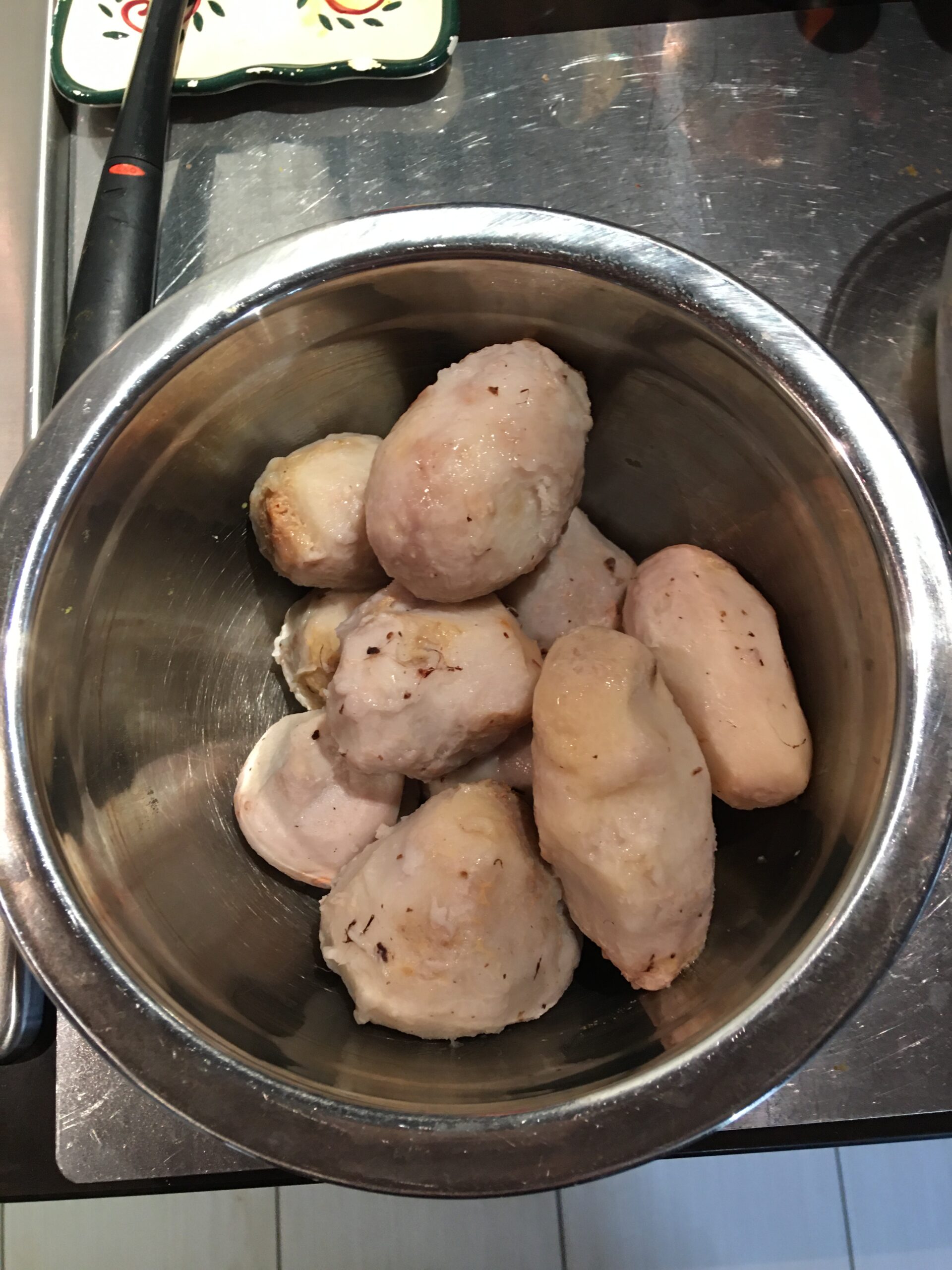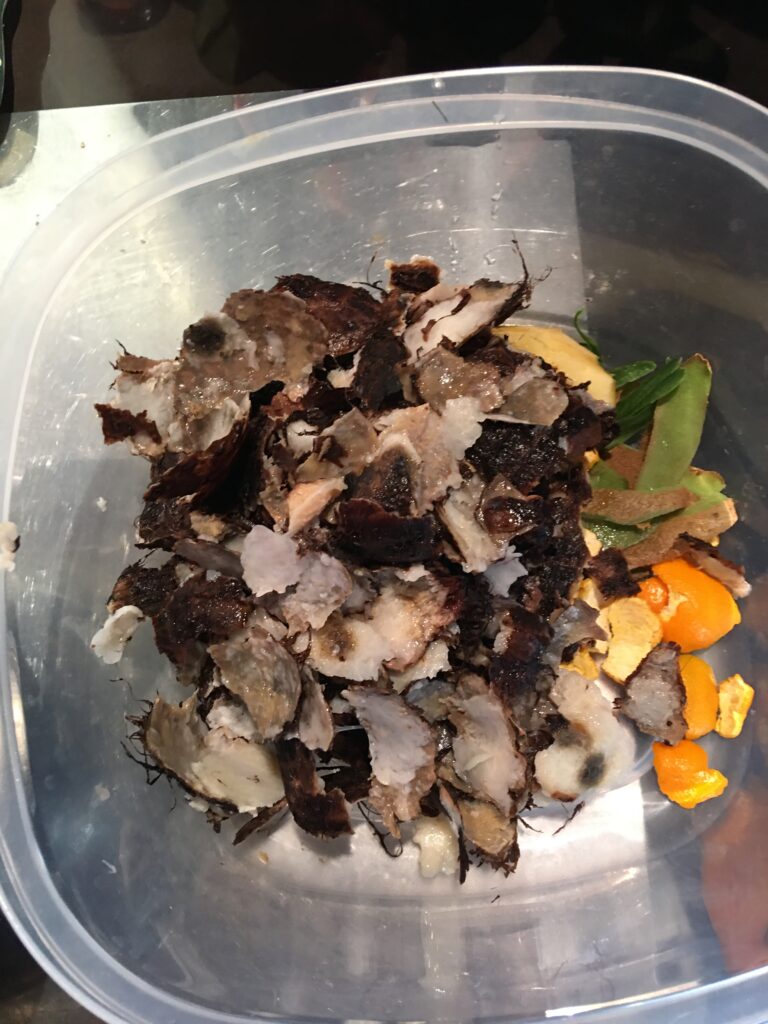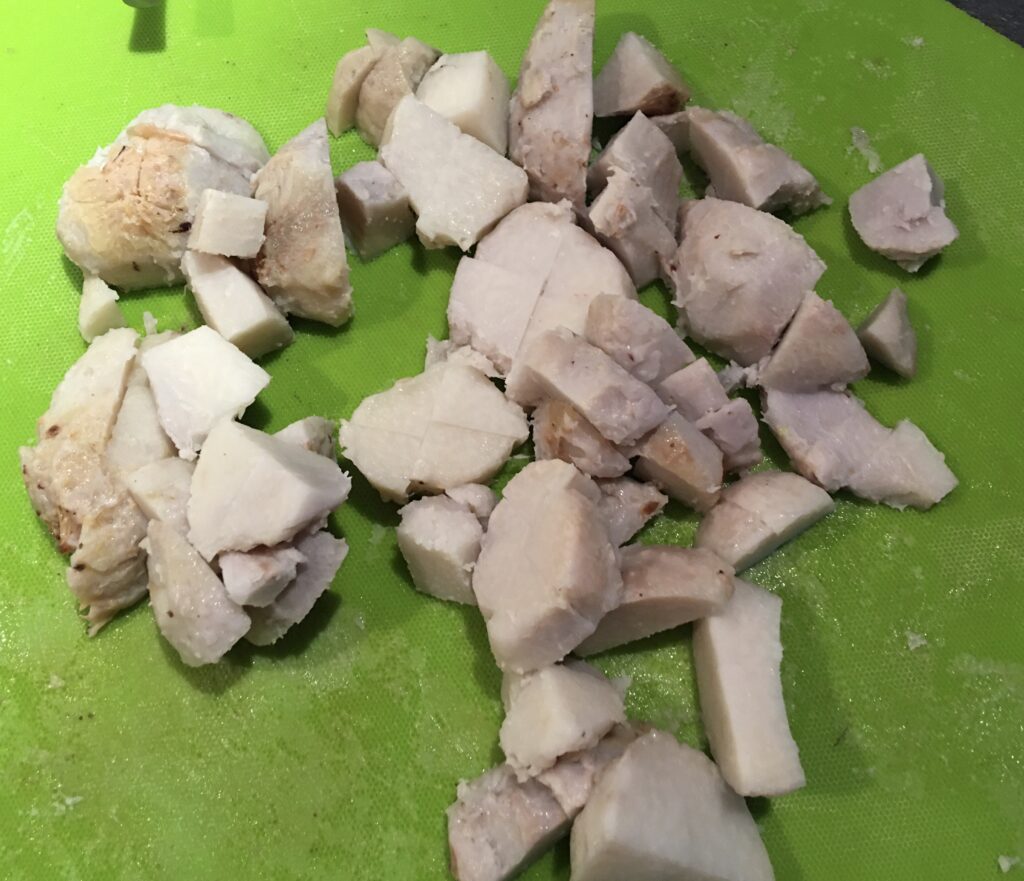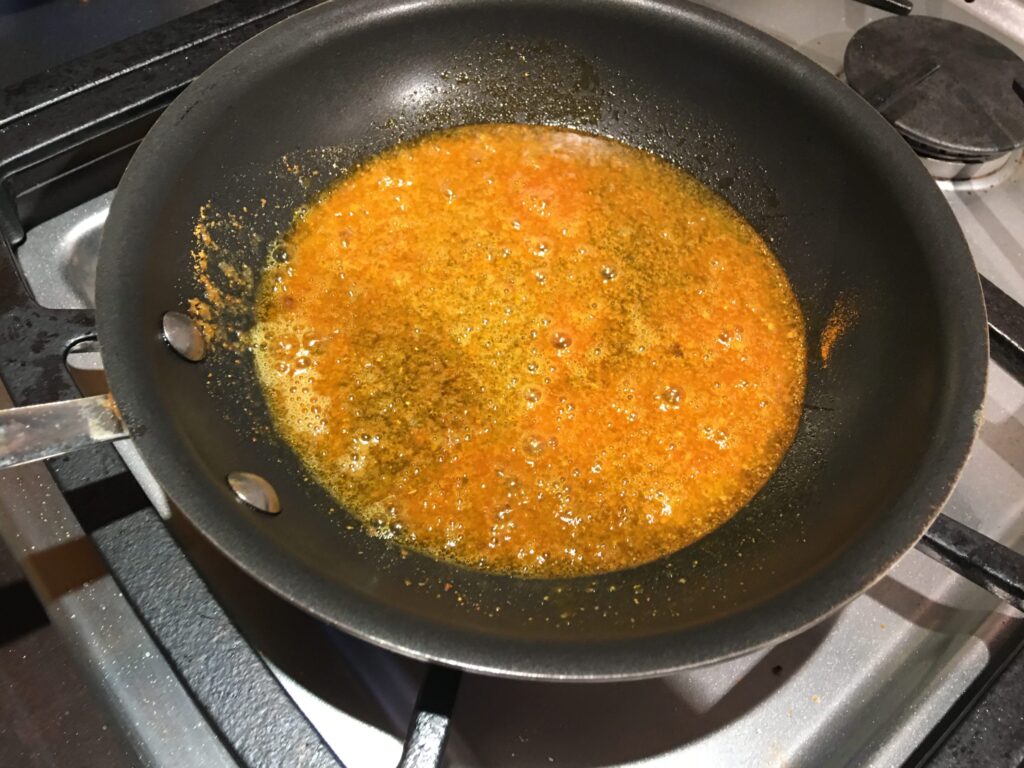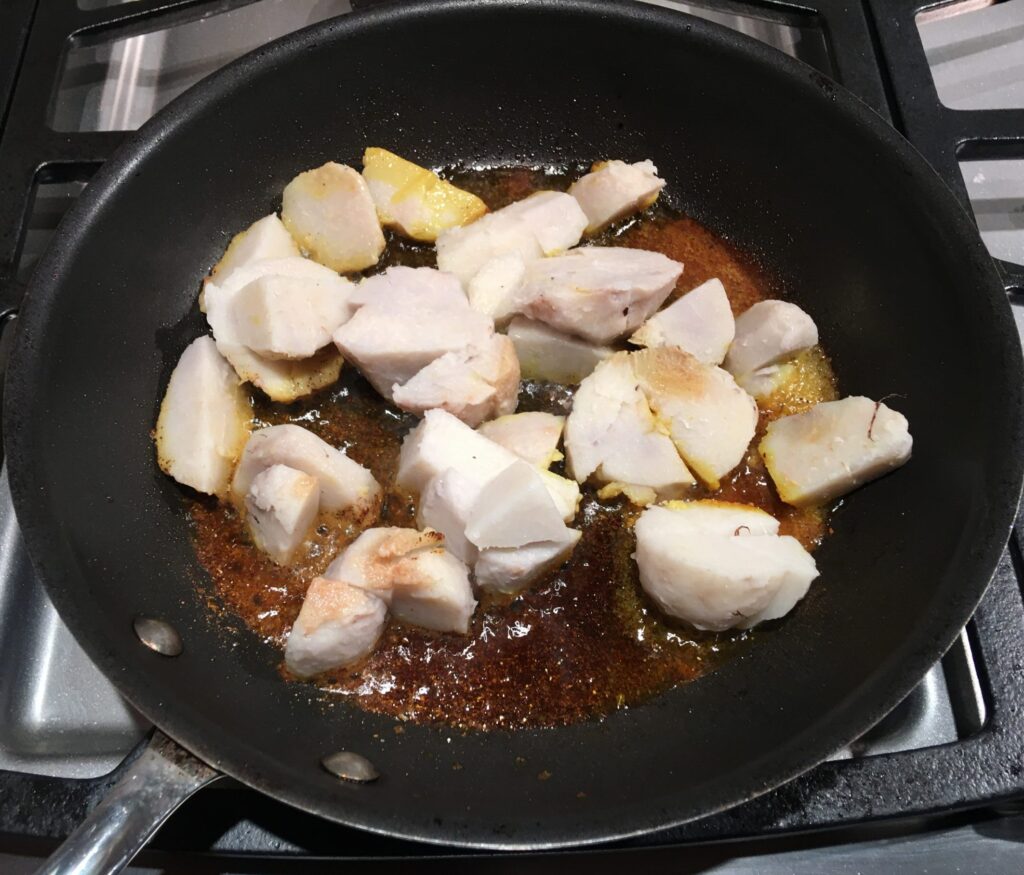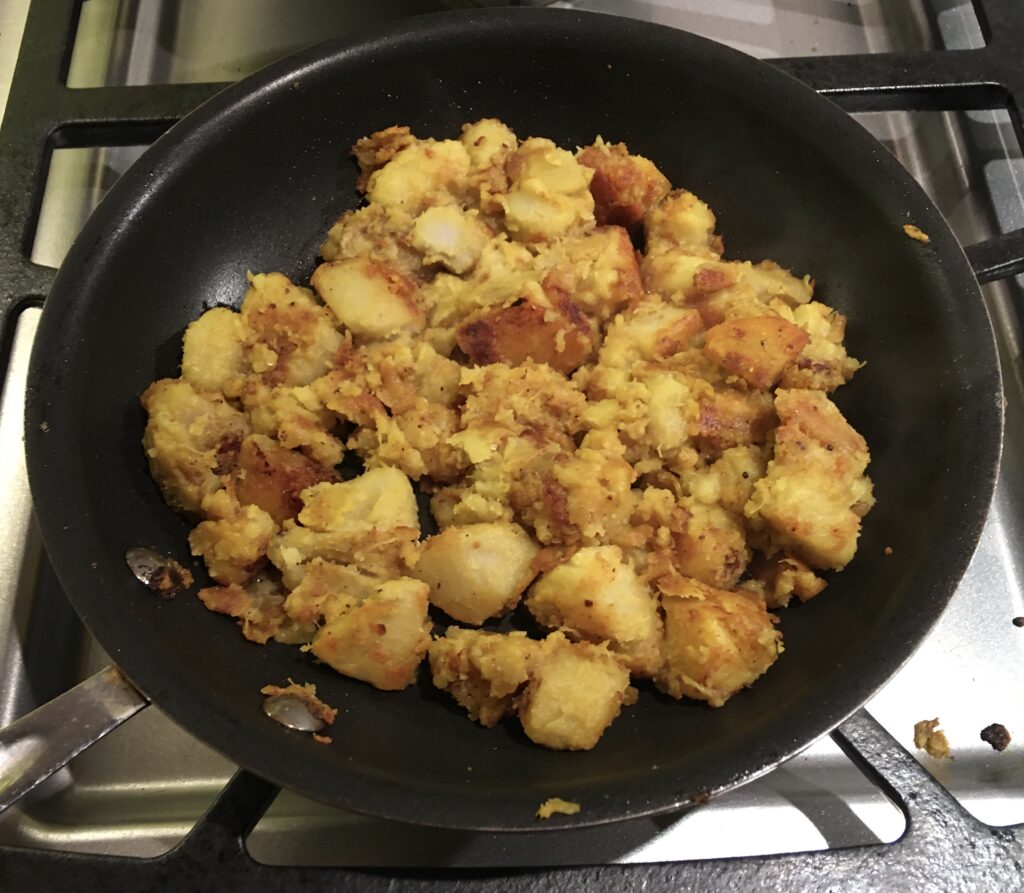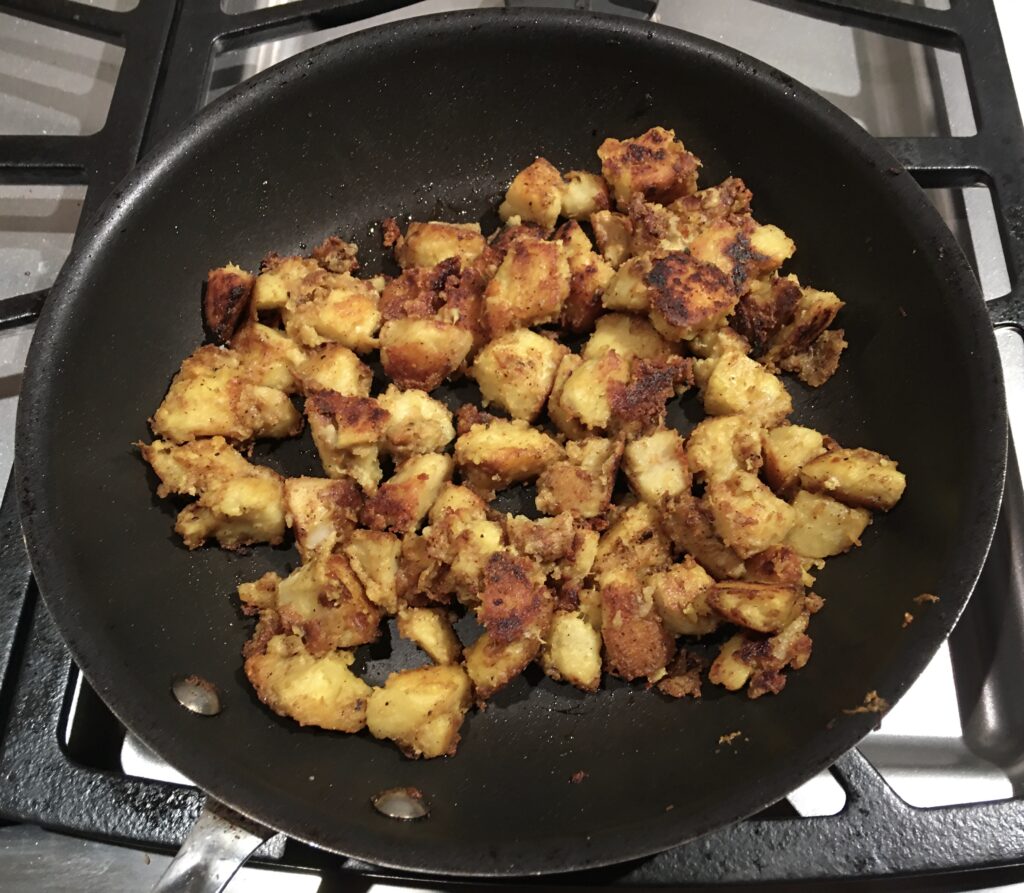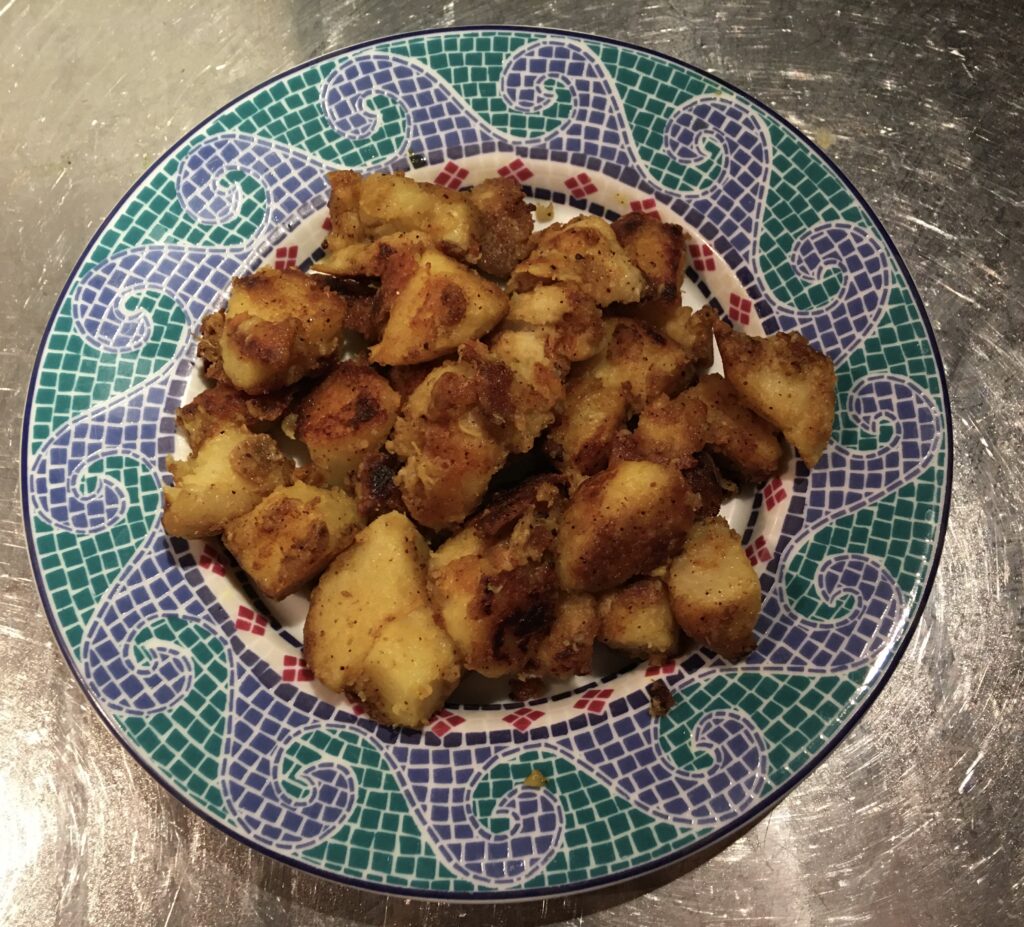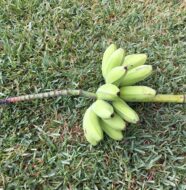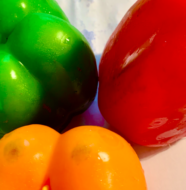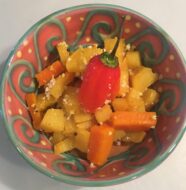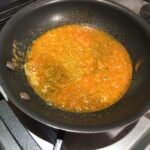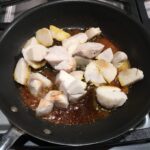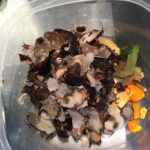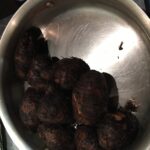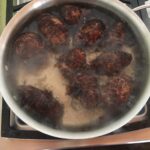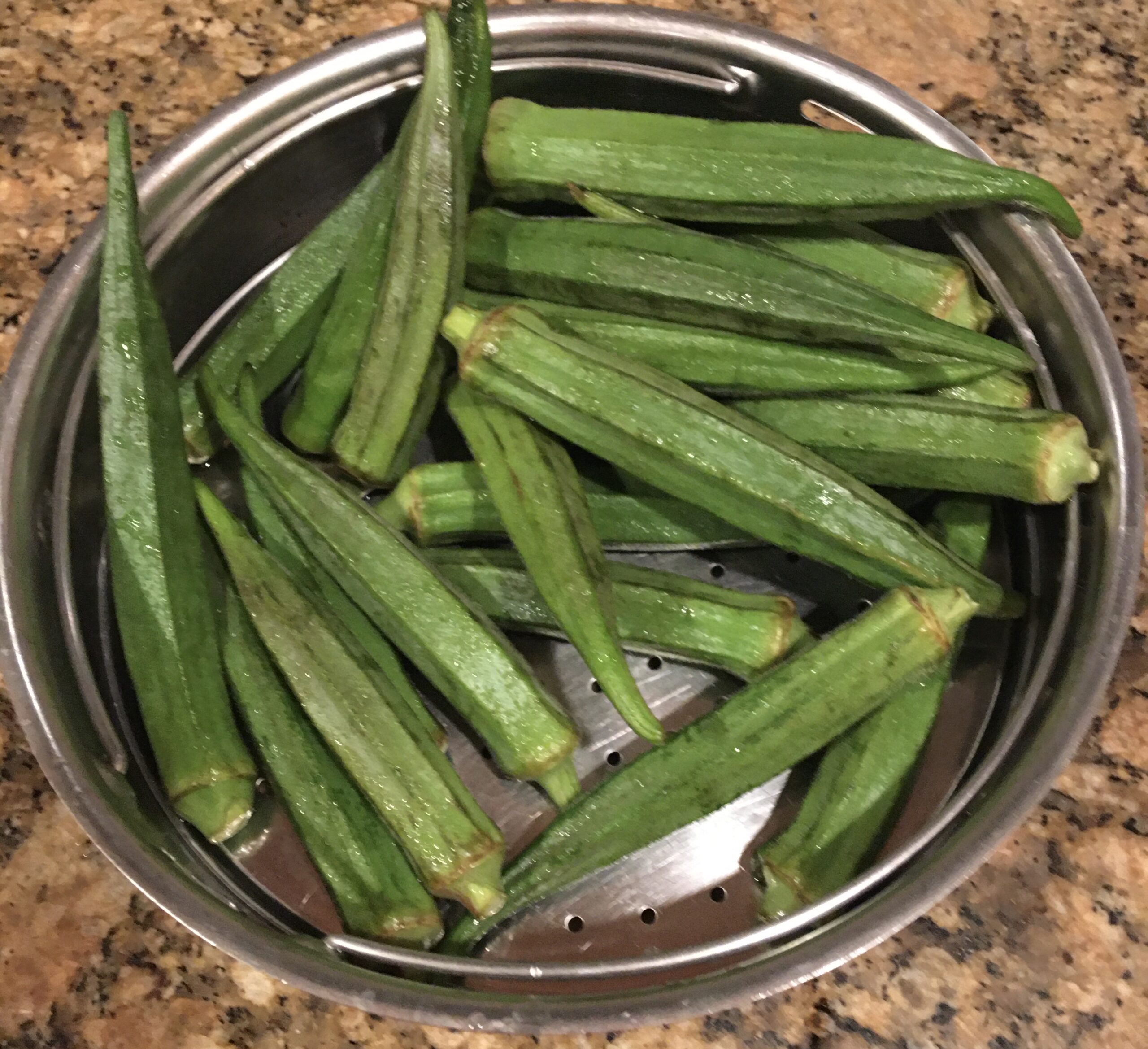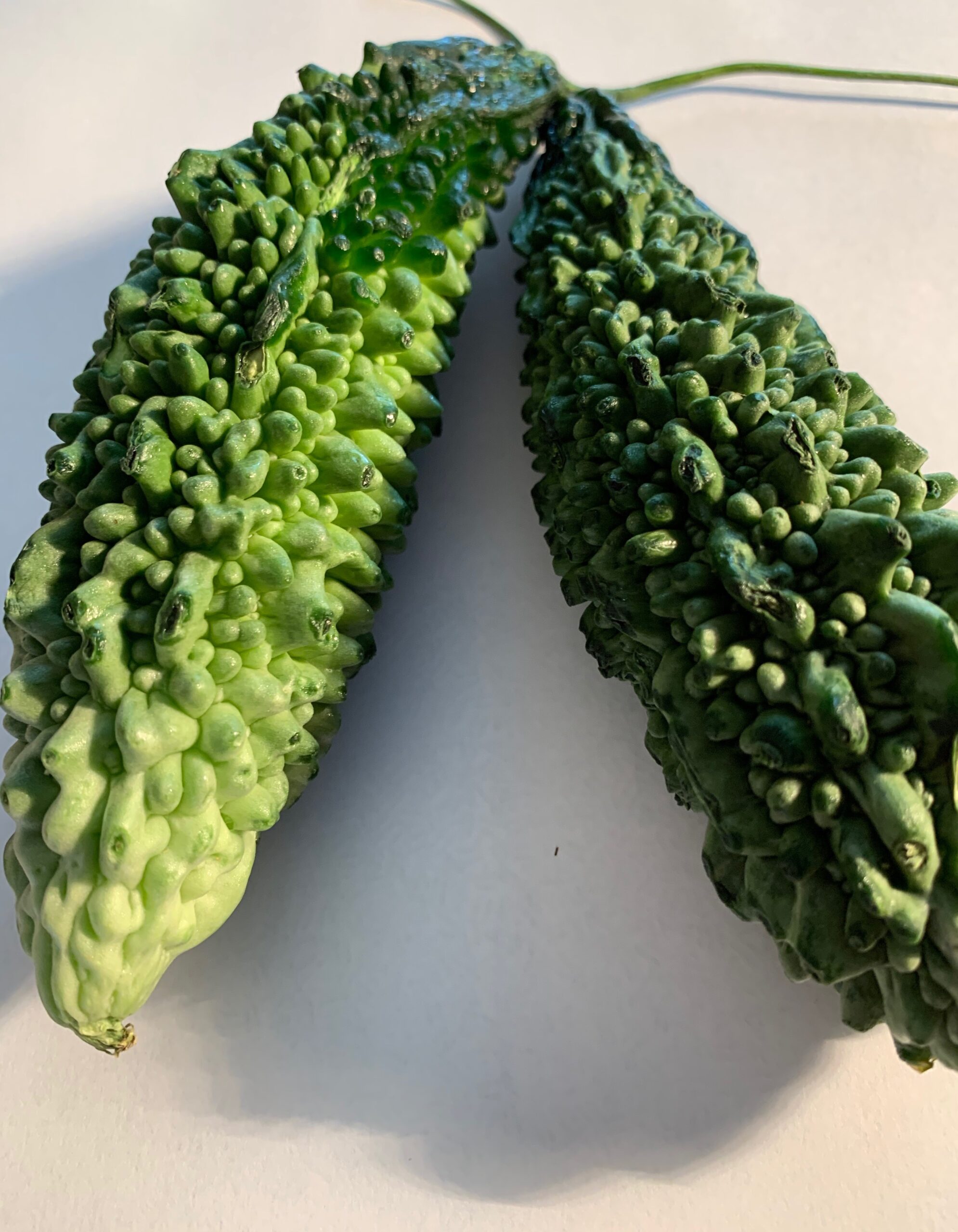Taro yam, called Chepan Kizhangu / Arbee in India, has a thin skin that can be peeled easily after boiling in water. Taro roots are used to prepare curries (Sambhar, Morekootan), deep fried as chips, can be sauteed, roasted, boiled, steamed, and pureed. They are starchy and provide plenty of energy. It is recommended to wear gloves prior to peeling and cutting yams.
Buying and Storage: Select Taro roots that are heavy for their size and unblemished. They should have no mold, soft patches, or wrinkling and be firm to touch at both ends. Store them in perforated bags in a cool dark ventilated space.
History: Taro is also called Name or Malanga in Latin America, Kalo in Hawai, Gabi in Phillippines, Inhame in Brazil & all translate to yam in English. Some Taro yams are purple inside and some are white; but all are scaly, brown & rough outside. Taro yam is used to make Poi in Hawai by pounding Taro with water until it becomes pudding-like. It is also boiled and mashed like potatoes. Taro chips, taro soup, taro bread, ice cream & frozen yogurt are some varieties of food. It is slightly sweet and once cooked has a pasty consistency. Taro can irritate the skin so it is good to wear a glove before curring or wash hands after cutting.
Story: Upperi literally means salted but also applies to sautéed vegetables in coconut oil in Kerala. It was a treat to be served hot upperi on banana leaves that were sautéed in an iron wok by the chef in my mother in law’s house in Palghat for home meals.
Nutrition facts of Taro Yam
(Colocasia Escuelenta) 100 g raw
| GI= 69 GL=12 | Minerals | Vitamins |
| Energy 112 kcal (^%) | Sodium 11mg (<1%) | Folates 22 mcg (5.5%) |
| Carb, 26.46 mg (20%) | Potassium 591 mg (12.5%) | Niacin 0.6 mg (4%) |
| Protein 1.5g (3%) | Calcium 43 mg (4%) | Pantothenic acid 0.303 mg (3%) |
| Total Fat 0.2g(<2%) | Copper 0.172mg (19%) | Pyridoxine 0.283 mg (23%) |
| Cholesterol 0mg (0%) | Iron 0.55mg (7%) | Riboflavin 0.025 mg (2%) |
| Dietary Fiber4.1g (11%) | Magnesium 33mg (8%) | Thiamin 0.095 mg (8%) |
| Phyto nutrients | Manganese 0.383mg (1.5%) | Vitamin A 76 IU (2.5%) |
| Beta Carotene 35 mcg | Selenium 0.7 mcg (1%) | Vitamin C 4.5 mg (7%) |
| Crypto xanthin 20 mcg | Zinc 0.23mg (2%) | Vitamin E 2.8 mg (20%) |
| Lutein zeaxanthin 0 | Vitamin K 1 mcg (1 %) |
Taro Yam Health Benefits
- Taro yam slows down the Aging Process: nutritious with vitamins A, C, B and minerals like Copper, Manganese, Zinc, Iron, Magnesium, Calcium, Selenium, Potassium, and Phyto-chemicals Beta carotene and Crypto- Xanthin, It contains protein, is cholesterol & gluten-free, and low in sodium too. All these are good antioxidants that protect against diseases and slow down the aging process.
- Taro yam maintains cardio-vascular health with Amino acids and Omega 3 & 6 oils: It has 17 different amino acids essential to maintain good health. Omega 3 & 6 oils required for cancer prevention and other diseases.
- Taro yam boosts immunity: Vitamin C (1 cup =11% RDA) removes toxins from the body, detoxifies it & boosts Immunity.
- Taro yam acts as Cancer deterrent for colon cancer: Dietary fiber in this tuber prevents colon cancer by preventing toxic compounds in the food from adhering to the colon mucosa. Vitamin A in yam gives protection from lung and oral cavity cancer. Leaves and roots contain polyphenols to protect from cancer.
- Taro yam helps maintain Heart Health with 0.1g fat and no cholesterol prevents the hardening of arteries. It contains 19% RDA of vitamin E needed to prevent the risk of a heart attack.
- Taro yam reduces Hypertension: low in sodium that can help to control blood pressure and help with kidney problems and fluid retention.
- Taro yam has Low Glycemic index which helps diabetics, who can consume yam without worrying about glucose spikes in the blood-stream. Low GI in Taro root helps to break down glucose in the liver slowly and lowers blood sugar. This is also useful for hypoglycemia as it provides long-lasting energy.
- Taro yam aids muscle Health: Taro contains Magnesium vital for muscle, bone & nerve health.
- Taro yam reduces fatigue: Taro can be consumed by athletes for long-lasting energy. Taro has Low GI which is good for athletes.
- Taro yam helps with Weight loss: Low cal 1 cup cooked yam =187 cal only; easy to digest & high in fiber that keeps one full longer; eases excretion of waste from the body.
Spice Power
- Turmeric powder has anti-inflammatory properties that have benefited those with arthritis. 400-600 mg of turmeric capsules 3 times per day give relief from inflammation
- Red chili powder boosts immunity with Betacarotene that gets converted to vitamin A essential for maintaining a healthy mucous
membrane in the body.
Method to cook Taro yam Sauté (Chembu Upperi
- Rinse and cook whole Taro yams in a pan in boiling water, on the stove or cook peeled and cut pieces in 4 cups water for 30 min.
- Drain water and allow cooling. Peel and slice into 1″ pieces or cubes.
- Heat the oil in a nonstick skillet, iron wok, or frying pan until hot.
- Now add the salt, spices, and sliced/cubed yam pieces.
- Sauté on medium heat until yam slices/cubes turn golden. (10 min)
- Sprinkle red or Dosai chili powder. Mix well before serving.
Serve Taro yam Sauté with Quinoa, Coconut Rice, Rice noodles,
TIPS
Variation : Substitute with elephant yam / Yucca / Jicama
Time saver: Use frozen cut pieces of yams available in frozen packets at stores
Dosai chili powder is mild – mix 1/2 tsp each urad+ chickpea flour with red chili powder
Chembu= Chepan kizhangu = Taro yam / Arbee

